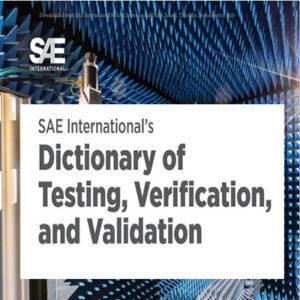The Importance of Documentation
In the fast-paced manufacturing world, the importance of documentation cannot be overstated. Documentation is the backbone of product development and manufacturing, ensuring every step is traceable, repeatable, and optimized for quality. Companies risk inefficiencies, product failures, and costly setbacks without proper documentation. This article delves into why documentation is essential, the problems associated with inadequate documentation in product testing, and key metrics that help measure performance.
We have had recurring conversations with manufacturing engineers who are responsible for keeping a long-running manufacturing line producing with missing documentation. This missing or long-since irrelevant documentation makes the job of maintenance and extensibility of the manufacturing line time-consuming and difficult. Their work now includes creating documentation on how the equipment works and how to maintain the equipment that has long been in place, in addition to improving the manufacturing line performance.
Importance of Documentation in Manufacturing
Ensures Consistency and Quality Control
One primary reason for documentation’s importance is maintaining consistency in manufacturing processes. Detailed documentation provides clear instructions, ensuring that every product is made to the same high standard. This consistency is crucial for maintaining quality control and meeting customer expectations.
Facilitates Knowledge Transfer and Training
Proper documentation is a training tool for new employees and a reference for experienced workers. It enables knowledge transfer across the organization, ensuring that critical information about processes, tools, and techniques is retained and accessible. Without this, companies can face significant disruptions if key personnel leave.
Aids in Compliance and Audits
Regulatory compliance is a significant concern in many industries. Comprehensive documentation is often required to meet regulatory standards and is crucial during audits. It demonstrates that the company adheres to industry standards and follows best practices, reducing the risk of non-compliance penalties.
Problems Associated with Lack of Documentation in Product Testing
Poor documentation of the product significantly impacts testing and verification actions. How do we test what is not known? Part of verification is exploring whether the product performs according to the specification, but what if there are no specifications? I can tell you having managed a large OEM testing department, you must push back on the design group to get relevant documentation, and in the interim, we test using experiential techniques. This is not a very efficient way to set about accomplishing the task.
Increased Risk of Product Failures
A lack of documentation during product testing can lead to failures that could have been avoided. Without detailed records of test conditions, results, and deviations, it’s challenging to identify and address potential issues. This oversight can result in defective products reaching the market, damaging the company’s reputation and leading to costly recalls. Lack of documentation means a lack of reviews of that documentation, which, from experience, can be a great tool for avoiding the propagation of defects from paper artifacts to actual products.
Inability to Track and Improve Processes
Documentation provides a historical record of what has been done, which is essential for process improvement. When documentation is lacking, it is impossible to track changes, understand what works, and make informed decisions about improving product quality or manufacturing efficiency.
Loss of Intellectual Property
Without proper documentation, the knowledge and insights gained during product development and testing may be lost. This loss represents a significant risk to a company’s intellectual property, as valuable information about product design, testing protocols, and production techniques may not be captured and preserved. This loss is not necessarily intellectual property in the form of patents but knowledge retention for the organization at large.
Key Metrics Associated with Product and Manufacturing Line Performance
First Pass Yield (FPY)
First-pass yield (FPY) is a critical metric that measures the percentage of products that pass quality inspection the first time without the need for rework. Proper documentation ensures that processes are followed consistently, which can lead to higher FPY and lower costs associated with rework.
Overall Equipment Effectiveness (OEE)
OEE is a measure of how effectively manufacturing equipment is used. Documentation helps track machine performance, maintenance schedules, and downtime, allowing companies to optimize their equipment use and improve OEE.
Defect Density
Defect Density measures the number of defects per unit produced. Detailed documentation during product testing helps identify and eliminate defects early, leading to lower defect density and higher product quality.
Conclusion
The importance of documentation in product and manufacturing lines extends beyond simply having a record of what has been done. It is crucial in maintaining quality, ensuring compliance, facilitating process improvements, and protecting intellectual property. Companies that neglect documentation risk facing significant challenges, from product failures to inefficiencies that can erode profitability. Businesses can enhance their manufacturing processes and deliver superior products by prioritizing comprehensive documentation.
For more information, contact us
Follow us on social media at:
Amazon Author Central https://www.amazon.com/-/e/B002A56N5E
LinkedIn:


